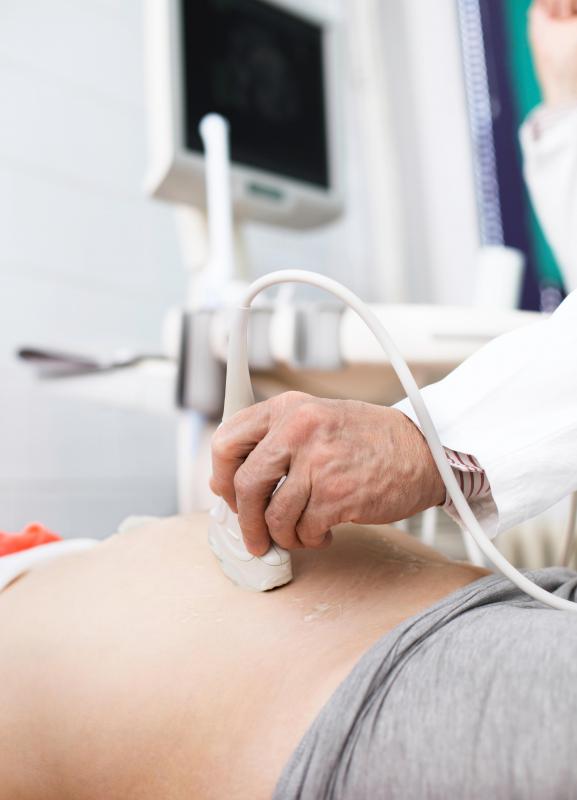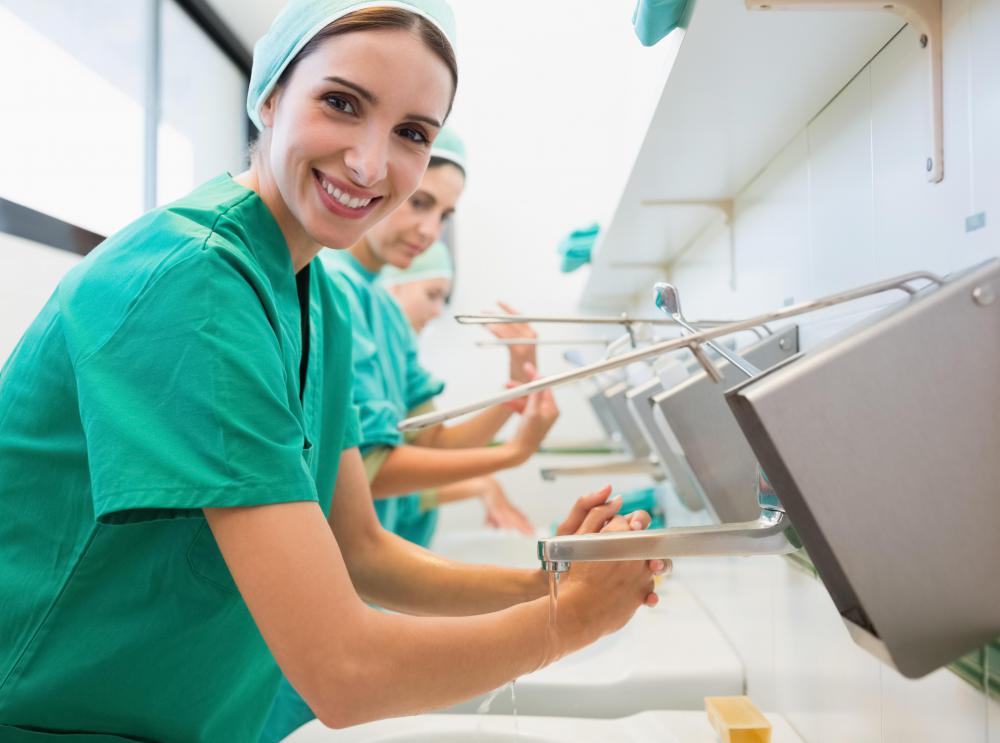At TheHealthBoard, we're committed to delivering accurate, trustworthy information. Our expert-authored content is rigorously fact-checked and sourced from credible authorities. Discover how we uphold the highest standards in providing you with reliable knowledge.
What Is a Suprapubic Cystostomy?
A suprapubic cystostomy is a procedure in which urine is drained by placing a tube directly through the abdominal wall into the bladder. This type of urologic surgery may be used when it is not possible to drain the bladder using the more common method, where a tube is inserted up the passage that normally carries urine from the body. Surgeons may perform a suprapubic cystostomy using conventional surgery, opening up the abdomen and inserting a tube into the bladder. Alternatively, they may pierce the bladder and insert a tube directly through the skin of the abdomen, using medical imaging techniques to guide them. A suprapubic cystostomy is sometimes referred to as an epicystostomy or a vesicostomy.
There are a number of reasons why surgeons may decide to use a suprapubic cystostomy. An emergency may arise when there is no other way to quickly empty the bladder. Occasionally, an infection could occur between the bladder and the urinary outlet, and draining urine via a different route can give this time to heal. The urethral passage, which carries urine from the bladder, may be damaged due to injury or disease and it may not be possible to pass a tube along it. Some patients have a long-term loss of control over their bladders due to nervous system disorders, and they may find a suprapubic cystostomy is the best way to manage their problem.

When a suprapubic cystostomy is carried out through the skin of the abdomen, an advantage is that it can be performed in a setting such as an outpatient clinic. There are a number of different ways of performing the procedure. One method involves passing a needle through the abdominal wall into the bladder and then passing a guide wire over it.
The needle is removed, leaving the guide wire in place. This allows the surgeon to guide a drainage tube over the wire and into the bladder. As it can be difficult to visualize the process, methods such as ultrasound-guided suprapubic cystostomy have been developed, enabling the surgeon to view images of the procedure in real time.

Patients with suprapubic cystostomies receive instructions on how to care for them. There are often two different types of collection bags that may be attached to the drainage tube — one for overnight and a smaller one for daytime use. Hygiene is important, and patients are advised to wash their hands before changing the bag or the dressing that covers the tube insertion. It is also vital to avoid obstructing the urinary flow by kinking or flattening the tube.
AS FEATURED ON:
AS FEATURED ON:














Discuss this Article
Post your comments